Mt. Takao, a highly revered mountain among the Japanese people, sees over 2.5 million visitors every year. This means it attracts more hikers than any other mountain in the world. With a close proximity to central Tokyo (50 minutes by train from Shinjuku Station), it’s an easy day trip for residents and tourists alike. Mt. Takao is most popular during the second half of November, when the fall foliage has reached it’s full vibrant splendor.
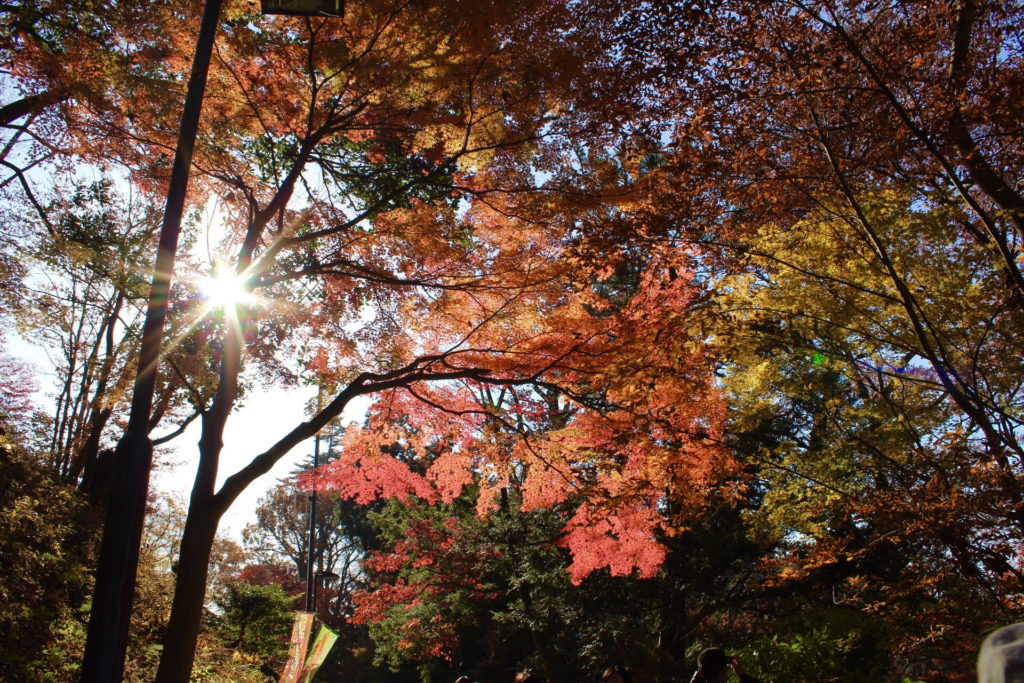
After seeing a friend’s post on her blog (read it here!), we knew we had to visit Mt. Takao this fall! Although still jet lagged from our recent trip back to the States, Mt. Takao was a top priority!
As soon as we started up the path to the mountain, we were met by the first of many food vendors. Dango are chewy rice dumplings that are roasted over coals and coated with a glaze. Ours was a soy sauce glaze. Yum!
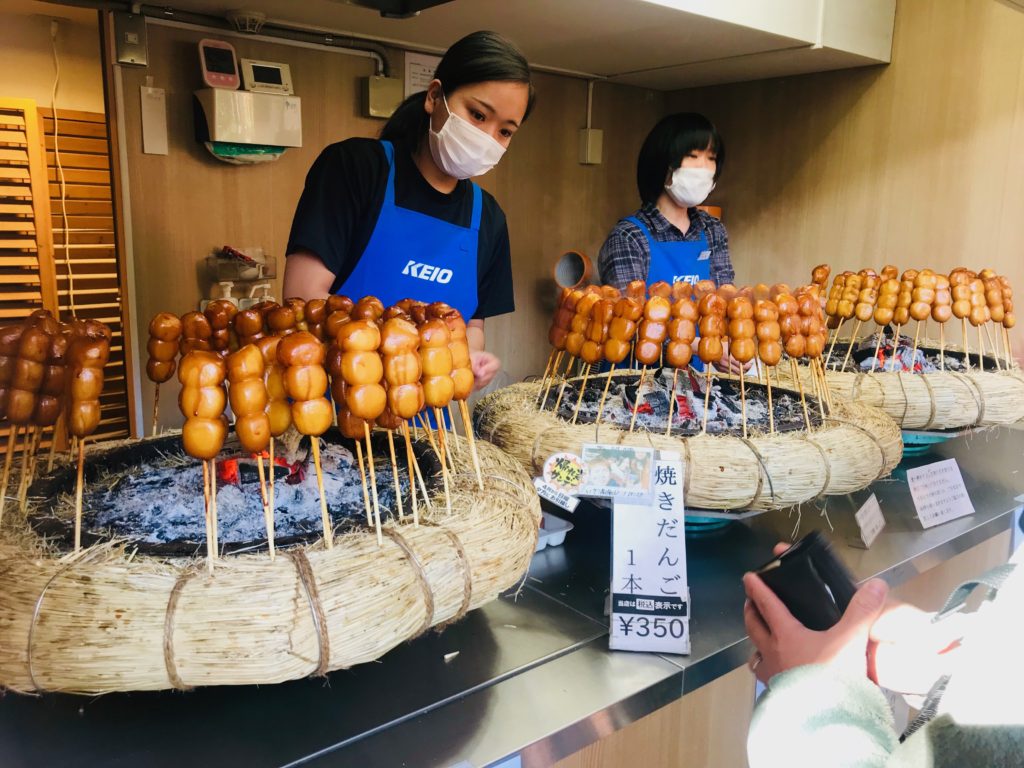
There are trails for everyone, regardless of your age or hiking expertise!
There are seven different trails leading up to the summit, as well as a ski lift and cable car that will take you halfway up the mountain. These different options ensure that there’s a trail for everyone. We saw lots of elderly men and women carefully climbing the steps, using leaning on their cane and the railing for support. Other families also had young children with them. We opted for the easiest and most popular trail – trail #1. This is a wide paved path that has several steep flights of stairs. You don’t need any special hiking gear to hike this trail.
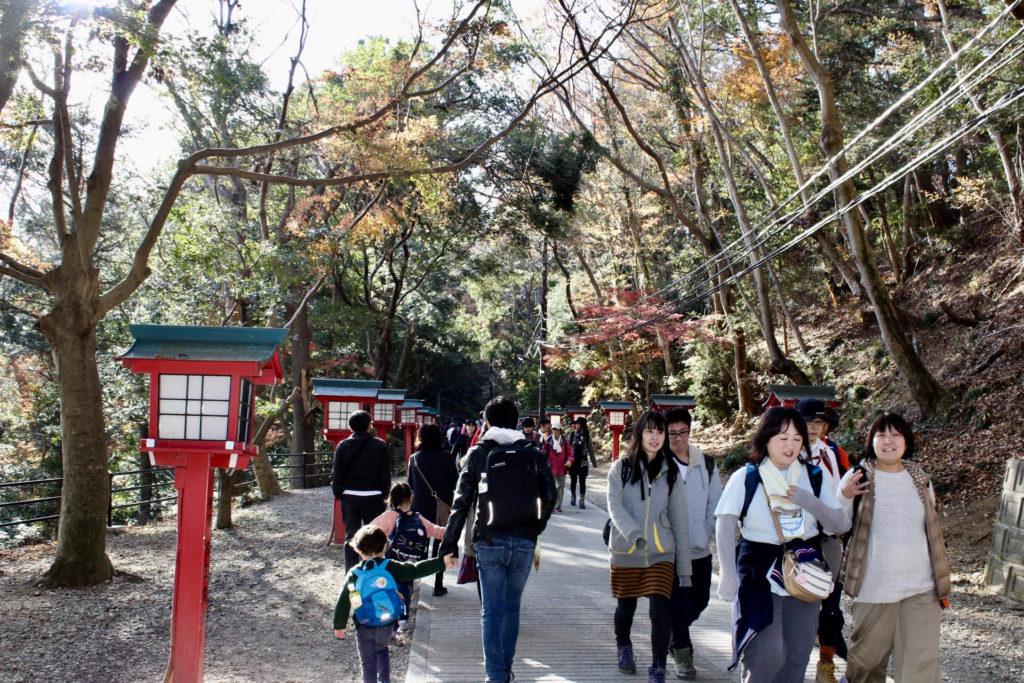
Taking the cable car made “climbing” the mountain with a baby super easy!
The crowds of people walking with us to the start of the trails made it feel like we were embarking on a holy pilgrimage! We opted to take the cable car, which is the steepest cable car in all of Japan. We stood at the very front of the car and were able to see the mountain falling away from under us at an alarming incline. It was a little unnerving!
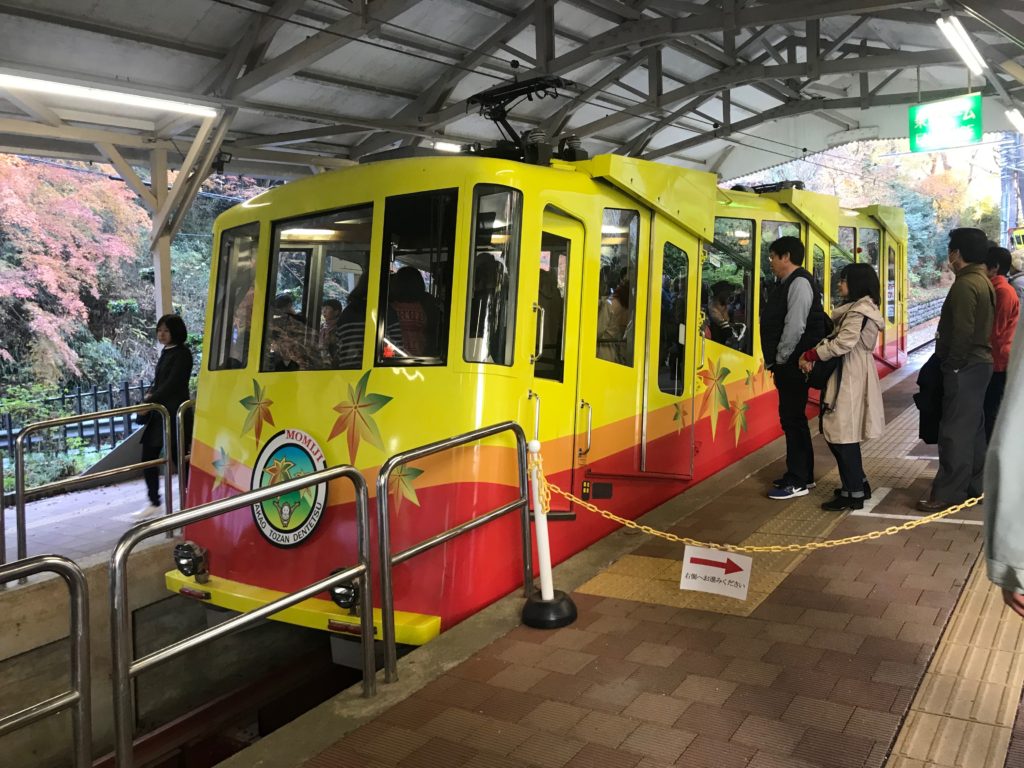
Throngs of other visitors, street vendors, and an incredible panoramic view met our eyes when we disembarked. On one side, mountains stretched as far as we could see. On the other side we could see where the mountains meet the city. The skyscrapers of Shinjuku looked like little toy buildings to us. It never fails to astound me how the busy metropolitan and the quiet mountainside can exist so close to each other. It’s the best of both worlds!
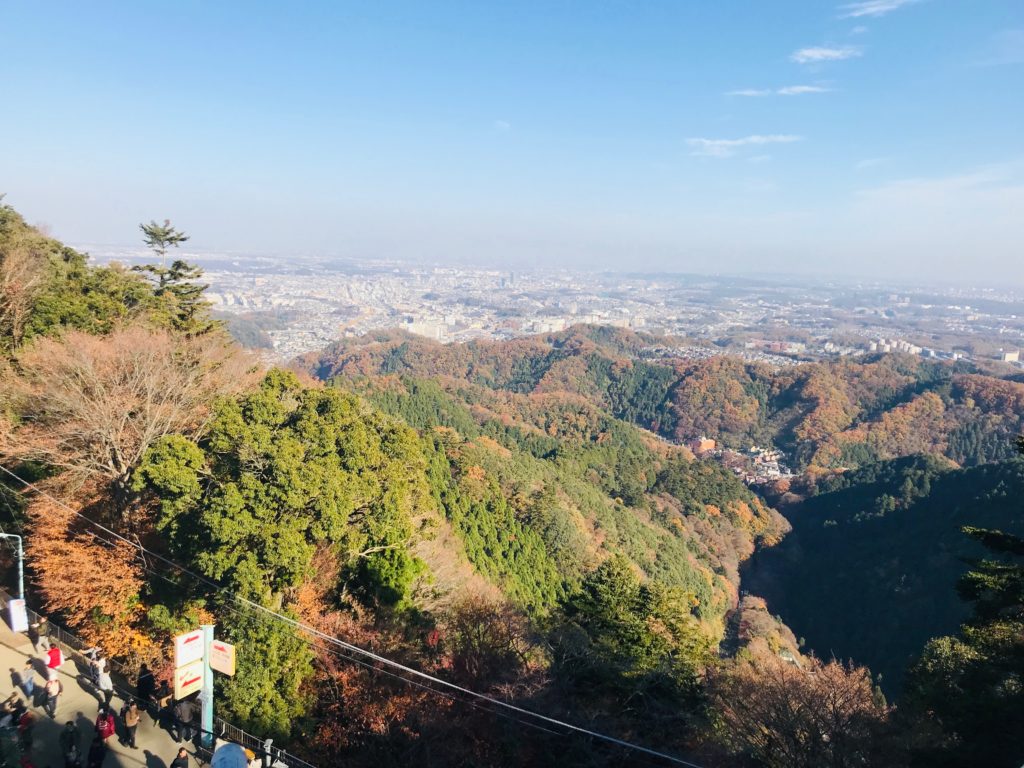
Activities for everyone – beer, food, monkeys, temples – you name it!
There are endless activities to do on Mt. Takao, even if you don’t feel like climbing to the summit. In the summer, there’s the Mt. Takao Beer Mount. All you can eat and drink, with open air seating at the top of an observatory. There’s a monkey park and wildflower garden that’s only ¥470 (around $4) to enter. We opted to skip this and go for the top of the mountain instead. With Ariana strapped to my chest in the carrier, we weren’t sure how much time we had before she started demanding to go home. She’s the shot-caller in the family now!
The Octopus tree is central to ancient folklore.
We passed the Octopus tree, an ancient cedar tree estimated to be over 500 years old. Legend has it that the tengu (gods of the mountain) were clearing paths to the top of the mountain when they came across this huge cedar blocking their way. They decided to go to sleep and work on cutting the roots up the next morning. However, when they came back the next day, the roots had curled up like an octopus against the tree trunk. The tree had moved its roots so that the tengu could continue their path up the mountain, unhindered. The tree has since been sacred and respected by the Japanese people. It’s a symbol of a path clearing to make the way for good fortune.
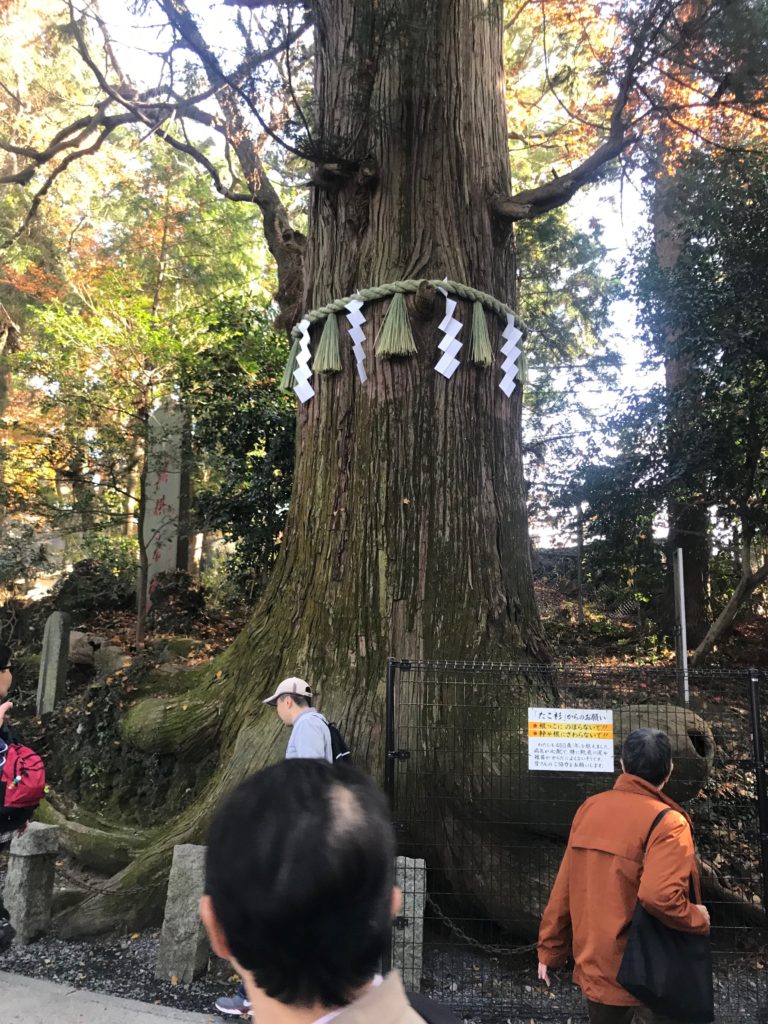
Not entirely part of the Shinto or Buddhism religion, the tengu are celestial (but also demonlike) guardians that protect Mt. Takao from evildoers. If you are a good person, you have nothing to worry about. But if you intend to do the mountain harm, they might drop you in the streets of Tokyo naked or make your nose grow long and curved.
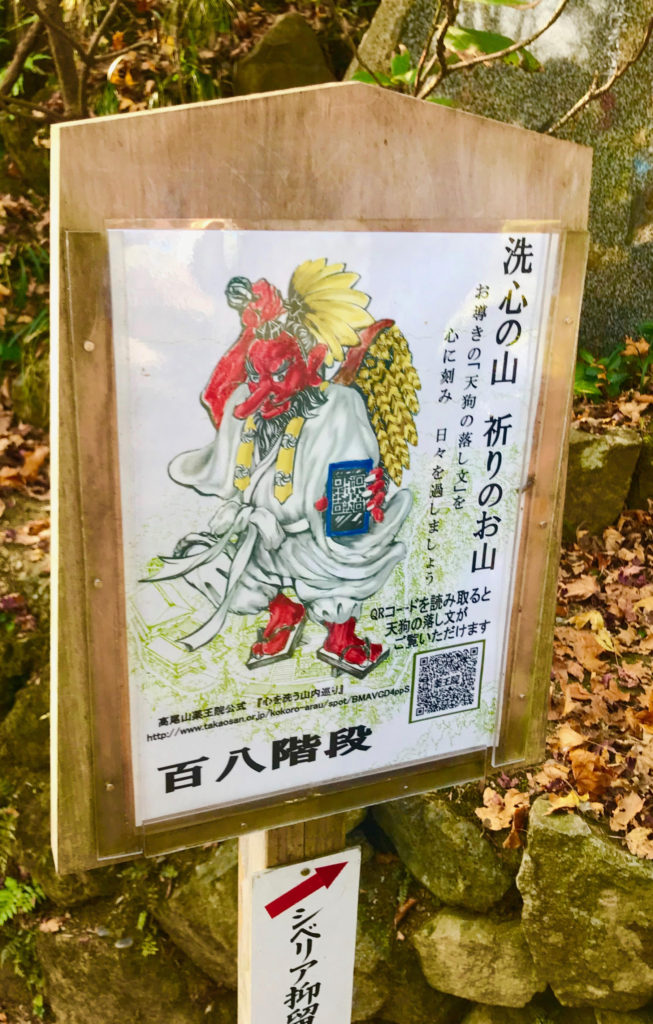
Yakuoin Temple has been sacred ground for centuries.
We reached Yakuoin Temple in twenty minutes from the cable car drop off point. This is one of the main temples of the Shingon Buddhism sect, and was founded in 744 A.D. Let that sink in for a minute. Being accustomed to living in a country that’s relatively young, it amazes me to witness a historic site so old. Even with the large crowds of visitors, the air was charged with spirituality and peace.
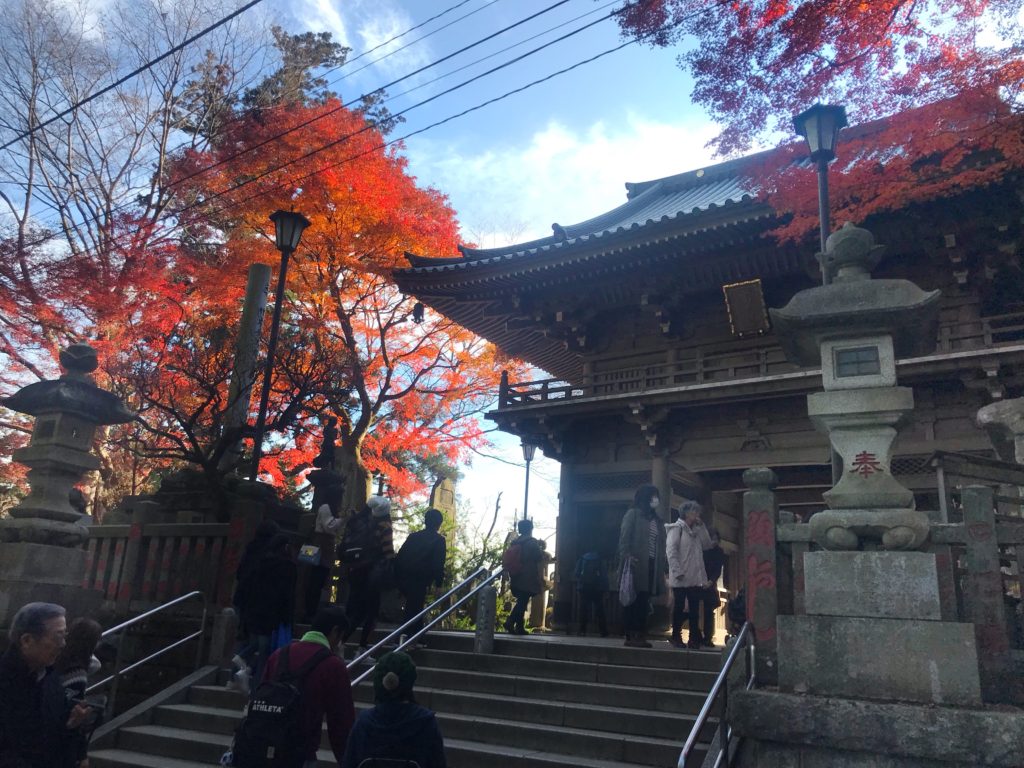
Mt. Takao is known for Shugendō, a path of discipline and the way of the mountain ascetics. They believe that the mountains are inhabited by many different gods. The mountain itself is a dojo and can provide one with the path to enlightenment. Shugendō combines Shinto and Buddhism. It incorporates elements of shamanism, indigenous folk beliefs, and nature worship. The government banned this religion in 1872, due to its combination of the two religions and superstitious nature. However, when religious freedom was reinstated after WWII, Shugendō was revived across the nation. Here’s an article I found that explains more about it.
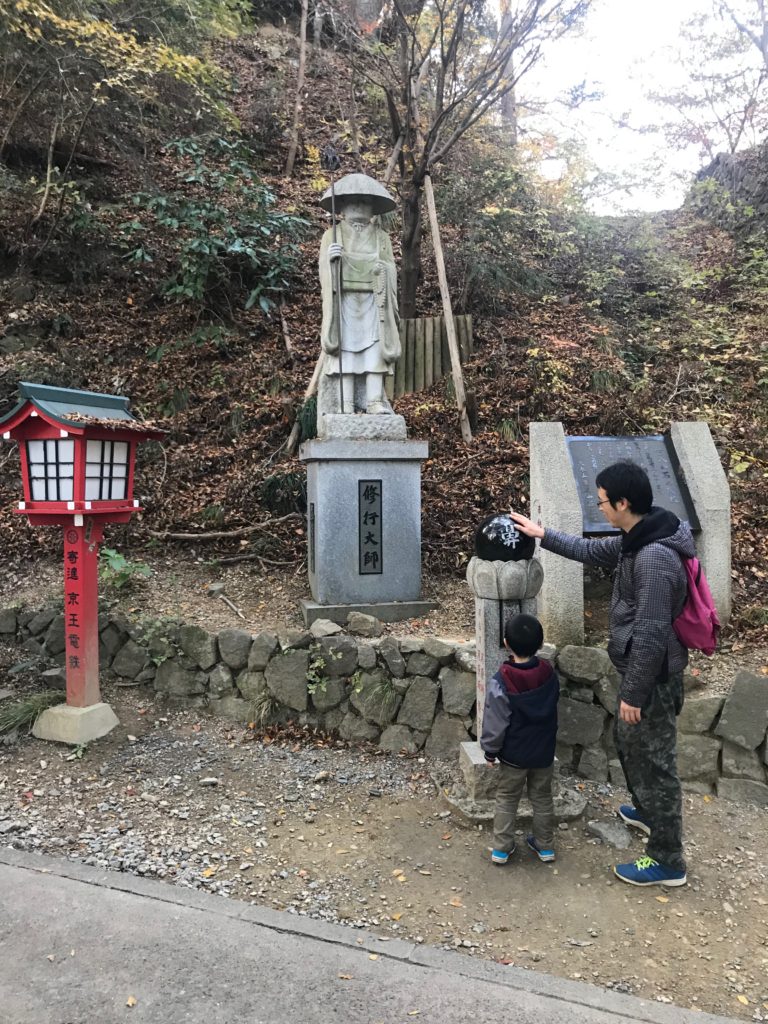
Following temple etiquette is key.
Upon reaching the grounds of Yakuoin Temple, we came upon the chozuya. This basin with bamboo ladles is to purify yourself before praying to the gods. First, you scoop a ladle of water and pour it over your left hand. Then switch hands and pour it over your right. You then swish your mouth out as well, but many people omit this last step. Make sure you’re pouring the water onto the ground and not back into the clean basin at the top! When visiting Japan, shrine and temple etiquette is extremely important.
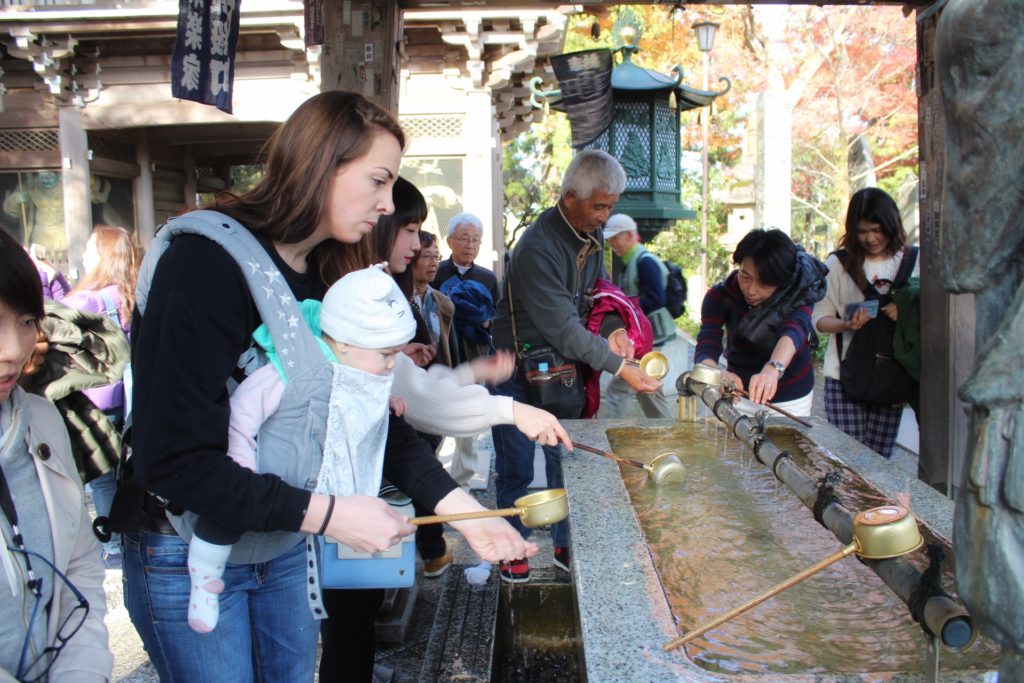
The temple grounds were incredible. There were several different stalls and stairways leading to different buildings of the temple.
There were little boxes where you could put ¥100 in and buy bells to hang on posts. You could also buy and burn incense in front of the temple itself as an offering to the gods. We could hear drums beating and music echoing within the walls of the mountaintop temple.
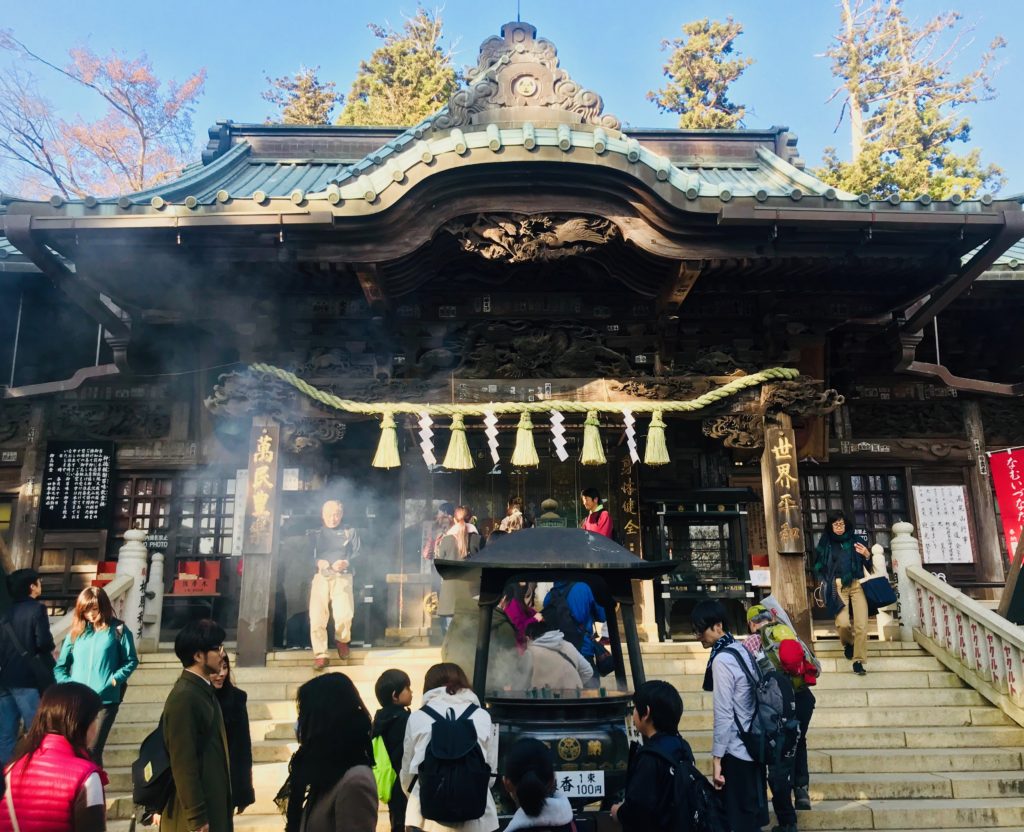
Anybody can participate in the various forms of mountain asceticism that are practiced – from firewalking to meditating under a waterfall. There’s a firewalking festival where Shugendō practicing monks walk barefoot over smoldering coals that we plan to attend next year!

Next time, we’ll make it to the top!
We headed back down the mountain before we reached the summit–Ariana was ready for some food and a long nap. But with so many different trails, activities and restaurants along Mt. Takao, I’m sure we’ll be back in no time. After thanking the tengu for a mindful day on their sacred mountain, we headed home.
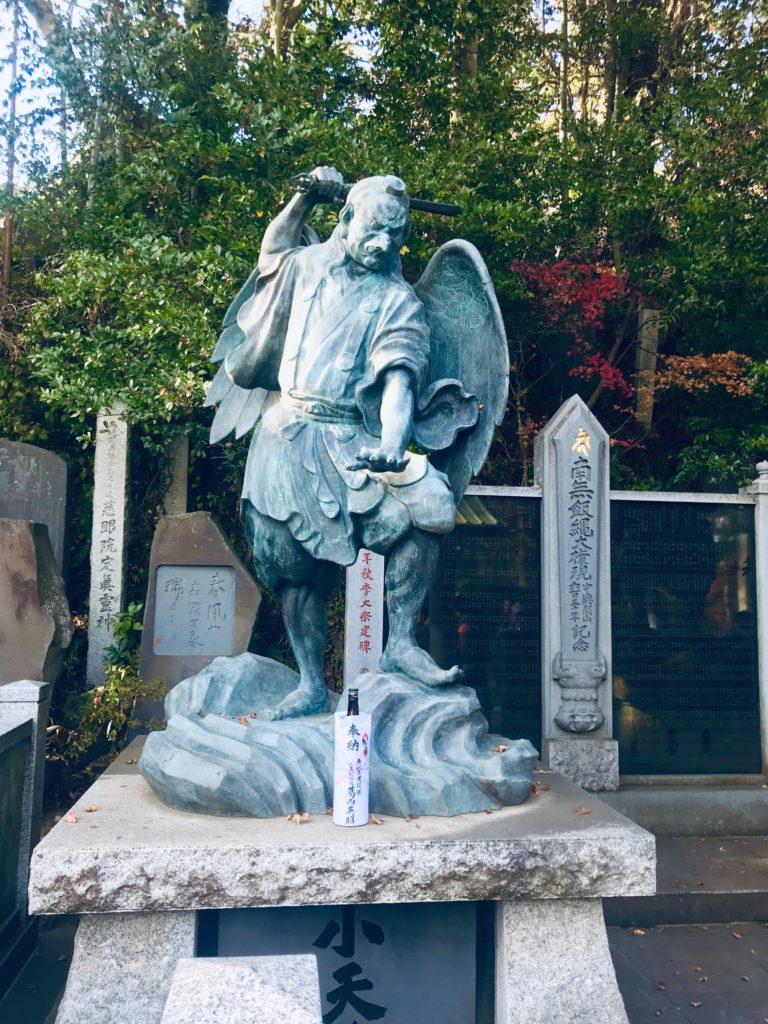
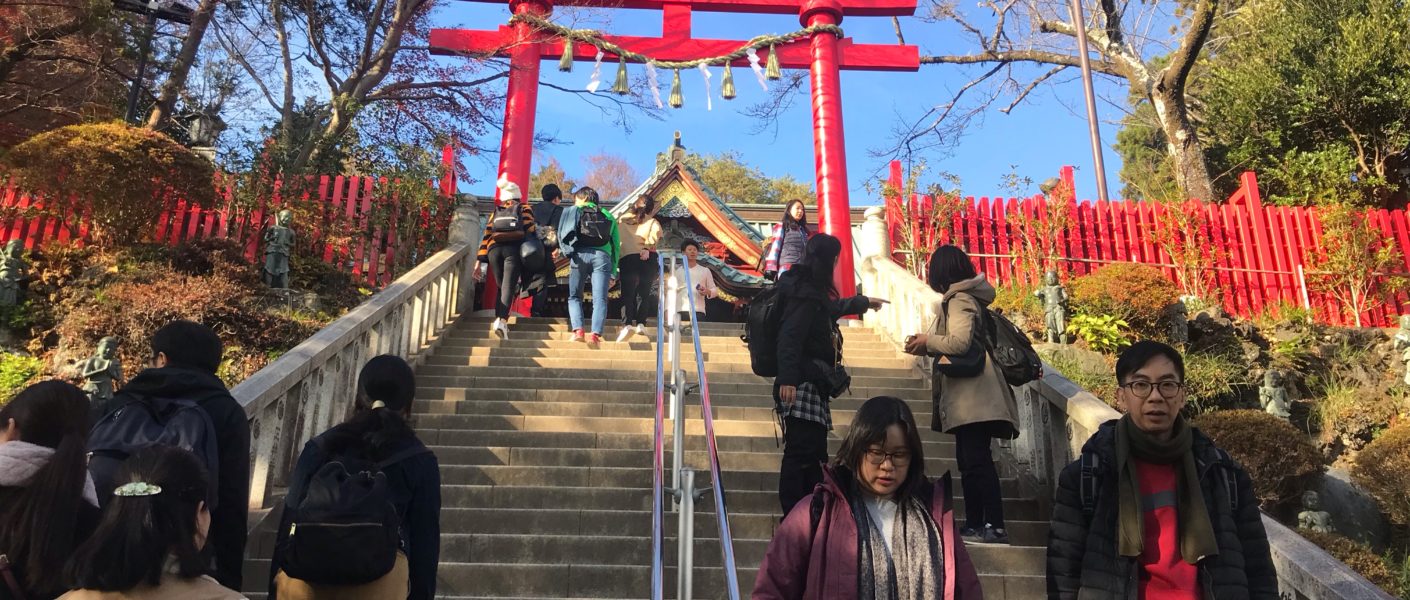



[…] season we’d be able to climb her. We haven’t done much hiking in Japan other than hiking Mt. Takao, but we knew we had to climb Mt. Fuji. It was a once in a lifetime opportunity. It was the craziest […]